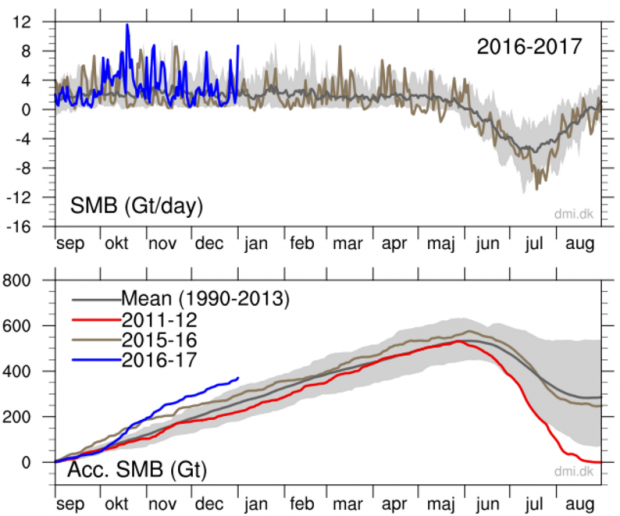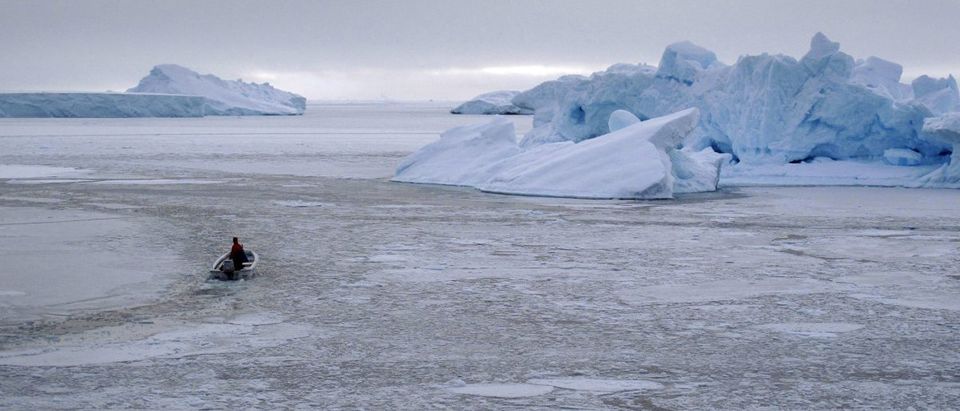Greenland’s ice sheet kicked off 2017 gaining about eight gigatons of snow and ice, which is well above what’s usually added to the ice sheet Jan. 1 for the last 24 years, according to Danish meteorologists.
In fact, Greenland’s ice sheet has been gaining ice and snow at a rate not seen in years based on Danish Meteorological Institute (DMI) data. DMI reports the Greenland ice sheet’s “mass surface budget” has been growing significantly since October.
Greenland’s “surface mass budget” for winter 2016-2017 is already more than two standard deviations higher than the northern ice sheet’s mean snow and ice accumulation over the last 24 years. DMI data shows the ice sheet added 8 gigatons of ice and snow Jan. 1, well above the standard deviation for that day.

Screenshot from the Danish Meteorological Institute’s website
Greenland’s booming snow and ice gains come after the U.S. National Snow and Ice Data Center (NSIDC) found the northern ice sheet had an “above average” melt season.
NSIDC found “near-average to below-average coastal snowfall levels that exposed bare ice earlier in the melting season, combined with warm and sunny conditions at lower elevations, led to high overall ice loss from runoff.”
Greenland “had a high early-season melt area, the pace slowed in mid-July relative to the warmest years,” NSIDC reported. Early 2016 saw an incredibly strong El Nino warming event.
Greenland’s extraordinary ice sheet gains also come as Arctic sea ice levels stand more than two standard deviations below normal. Arctic sea ice coverage shrank in November, setting a record low, due to “unusually high air temperatures, winds from the south, and a warm ocean.”
DMI notes Greenland’s ice sheet “snows more than it melts,” but adds that “calving of icebergs also adds to the total mass budget of the ice sheet.”
“Satellite observations over the last decade show that the ice sheet is not in balance,” according to DMI. “The calving loss is greater than the gain from surface mass balance, and Greenland is losing mass at about 200 Gt/yr.”
Follow Michael on Facebook and Twitter
All content created by the Daily Caller News Foundation, an independent and nonpartisan newswire service, is available without charge to any legitimate news publisher that can provide a large audience. All republished articles must include our logo, our reporter’s byline and their DCNF affiliation. For any questions about our guidelines or partnering with us, please contact licensing@dailycallernewsfoundation.org.


